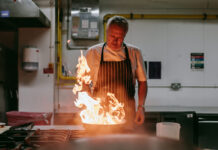
THE Highlands and East Dunbartonshire were the only parts of Scotland to have increased the number of pubs in their areas between 2001 and 2019, according to the Office for National Statistics (ONS).
The Economies of ale: changes in the UK pubs and bars sector, 2001 to 2019 report – an analysis of trends in the UK’s pub and bar sector between 2001 and 2019 – revealed the number of public houses in the Highland Council area grew by 24% during the 18-year period, displaying the second highest pattern of growth in the UK; East Dunbartonshire council also saw a 20% rise in establishments during the study. Overall, the number of pubs across Scotland fell from 3595 in 2001 to 2835 last year.
Falkirk saw a 40% slump in venues; the Scottish Borders and North Ayrshire each saw a 39% drop and Fife council experienced a fall of 29%.
The report, which was published on January 16, also concluded the number of pubs and bars in the UK with fewer than ten employees had increased for the first time in more than 15 years: the figure rose by 85 between 2018/19.
Figures also demonstrated that the industry employed a greater number of kitchen staff (chefs, cooks, waiters, waitresses, and kitchen and catering assistants) than bar staff with 43.8% kitchen staff in employment in 2019 compared to 28.9% bar staff.
Despite the overall decrease in pubs and bars across the UK, the report highlighted a rise in the creation of jobs within the sector; there were a reported 457,000 employees in the industry in 2019, a 7% rise on the previous year.
Hugh Stickland, senior statistician, said: “While smaller pubs have been struggling to survive in recent years, bigger pubs have been growing in number. This growth has been driven by food rather than drink and we’ve seen a big rise in the number of people employed as pub kitchen and waiting staff.
“The latest year, however, shows the first rise in total numbers since before the financial crisis, with growth in pubs of all sizes. We’ll have to wait to see if this marks a revival for smaller ‘locals’.”



















